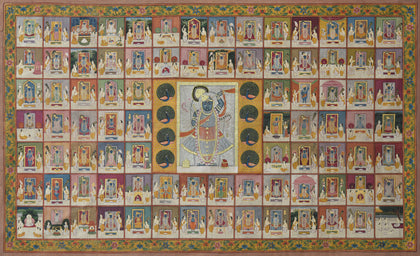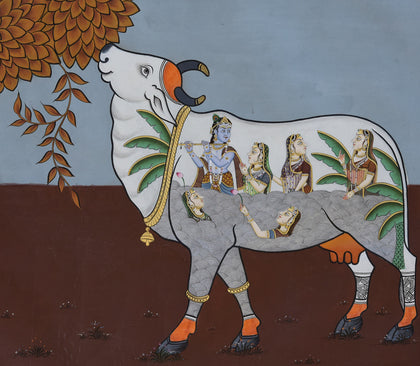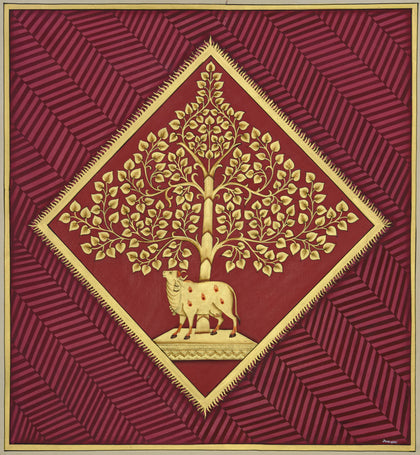Loading...
Sharad Purnima - 02
Price on Inquiry
All orders are insured for transit.
We ship worldwide.























































Please enter the email address linked to your Artisera account, and we will send you a link to reset your password.
Sign Up to access your Wish List and hear from us on all that’s new!
Loading...
All orders are insured for transit.
We ship worldwide.
All orders are insured for transit.
We ship worldwide.
| Size: | 93 x 110 inches |
| Medium: | Painted on Cloth |
Pichwai (pichvai) is a style of painting that originated over 400 years ago, in the town of Nathdwara near Udaipur in Rajasthan, India. Intricate and visually stunning, pichwai paintings, made on cloth, depict tales from Lord Krishna's life. Creating a pichwai can take several months, and requires immense skill, as the smallest details need to be painted with precision. Lord Krishna is often depicted as Shrinathji in Pichwais, which is the deity manifest as a seven-year-old child. Other common subjects found in pichwai paintings are Radha, gopis, cows and lotuses. Festivals and celebrations such as Sharad Purnima, Raas Leela, Annakoot or Govardhan Puja, Janmashtami, Gopashtami, Nand Mahotsav, Diwali and Holi are frequently depicted in Pichwais.
The word Pichwai comes from 'pichh' meaning back, and 'wai', meaning textile hanging. They are made by members of the Pushti Marg sect, founded by Shri Vallabhacharya in the 16th Century. Originally, pichwai paintings were used to decorate the temple of Shrinathji (Shrinathji ki Haveli) in Nathdwara, hung behind the deity to celebrate different seasons, festivals and events in Lord Krishna's life. Over time, pichwais also found a place in the homes of art connoisseurs, owing to their visual appeal. Like several other traditional Indian art forms, the art of Pichwai is also dying, and requires recognition and revival.
| Size: | 93 x 110 inches |
| Medium: | Painted on Cloth |
All orders are insured for transit.
We ship worldwide.
This item has been added to your shopping cart.
You can continue browsing
or proceed to checkout and pay for your purchase.
This item has been added to your
shopping cart.
You can continue browsing
or proceed to checkout and pay for
your purchase.
This item has been added to your wish list.
You can continue browsing or visit your Wish List page.
Are you sure you want to delete this item from your Wish List?
Are you sure you want to delete this
item from your Wish List?

Thank you for sharing your email address!
You’ll shortly receive a Welcome Letter from us.
Please check your spam folders if you can’t
locate the email in your inbox.
Thank you for sharing your email address! You’ll shortly receive a Welcome Letter from us. Please check your spam folders if you can’t locate the email in your inbox.















